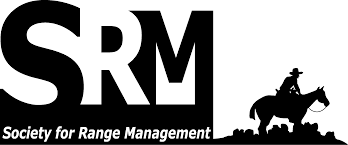Location
The Society for Range Management is the professional scientific society and conservation organization whose members are concerned with studying, conserving, managing and sustaining the varied resources of the rangelands which comprise nearly half the land in the world. Established in 1948, SRM has over 4,000 members in 48 countries, including many developing nations.
SRM’s members are land managers, scientists, educators, students, producers and conservationists–a diverse membership guided by a professional code of ethics and unified by a strong land ethic.
MISSION
Providing leadership for the Stewardship of Rangelands based on sound ecological principles.
VISION
A well-trained and highly motivated group of professionals and rangeland users working with productive, sustainable rangeland ecosystems.
Members:
Resources
Displaying 16 - 20 of 26Linking Phenology and Biomass Productivity in South Dakota Mixed-Grass Prairie
Assessing the health of rangeland ecosystems based solely on annual biomass production does not fully describe the condition of the plant community; the phenology of production can provide inferences about species composition, successional stage, and grazing impacts. We evaluated the productivity and phenology of western South Dakota mixed-grass prairie in the period from 2000 to 2008 using the normalized difference vegetation index (NDVI). The NDVI is based on 250-m spatial resolution Moderate Resolution Imaging Spectroradiometer (MODIS) satellite imagery.
Performance of Quantitative Vegetation Sampling Methods Across Gradients of Cover in Great Basin Plant Communities
Resource managers and scientists need efficient, reliable methods for quantifying vegetation to conduct basic research, evaluate land management actions, and monitor trends in habitat conditions. We examined three methods for quantifying vegetation in 1-ha plots among different plant communities in the northern Great Basin: photography-based grid-point intercept (GPI), line-point intercept (LPI), and point-quarter (PQ). We also evaluated each method for within-plot subsampling adequacy and effort requirements relative to information gain.
Managing High-Elevation Sagebrush Steppe: Do Conifer Encroachment and Prescribed Fire Affect Habitat for Pygmy Rabbits?
Both fire and conifer encroachment can markedly alter big sagebrush communities and thus habitat quality and quantity for wildlife. We investigated how conifer encroachment and spring prescribed burning affected forage and cover resources for a sagebrush specialist, the pygmy rabbit. We studied these dynamics at spring prescribed burns in southwestern Montana and eastern Idaho during the summer of 2011.
Is Proactive Adaptation to Climate Change Necessary in Grazed Rangelands?
In this article we test the notion that adaptation to climate change in grazed rangelands requires little more effort than current approaches to risk management because the inherent climate variability that characterizes rangelands provides a management environment that is preadapted to climate change. We also examine the alternative hypothesis that rangeland ecosystems and the people they support are highly vulnerable to climate change.
How Can Science Be General, Yet Specific? The Conundrum of Rangeland Science in the 21st Century
A critical challenge for range scientists is to provide input to management decisions for land units where little or no data exist. The disciplines of range science, basic ecology, and global ecology use different perspectives and approaches with different levels of detail to extrapolate information and understanding from well-studied locations to other land units.


